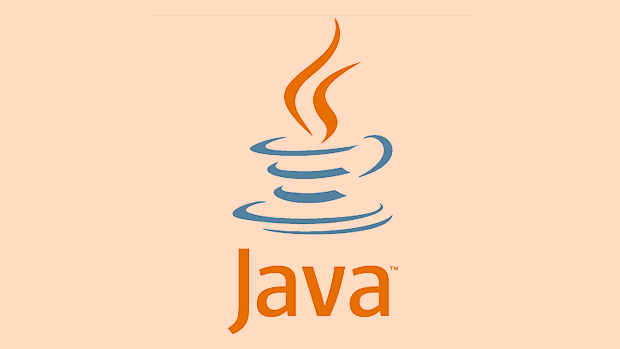How does the Java Enum type work internally?
Jul 09, 2025 am 02:09 AMJava enums are essentially classes inherited from java.lang.Enum. Each enum value is a static final instance of the class and is initialized when the class is loaded. 1. Enumeration supports adding fields, constructor methods, ordinary methods and abstract methods to enable them to carry data and encapsulate behavior; 2. Each enum instance implies two fields, name and ordinal, representing the name and declaration order respectively. The ordinal value is determined by the declaration order and is not recommended for business judgment; 3. Enumerations rely on ordinal values ??in switch, changing the declaration order will affect logic; 4. Enumeration provides values() and valueOf() methods to obtain all instances and find instances based on names; 5. Enumeration can implement interfaces or define abstract methods, and different enumeration values ??can achieve different behaviors, which are suitable for policy patterns and other scenarios. Understanding these mechanisms can help write clearer and more efficient code.

Java's enum type (Enum) looks simple, but the internal implementation is actually very interesting. It is not a simple set of constants, but a complete class structure with a set of mechanisms behind it to ensure its security and ease of use.

Enumeration is essentially a class
When you write an enum, the Java compiler will automatically generate a class inherited from java.lang.Enum for you. For example, you wrote:
enum Color { RED, GREEN, BLUE }After compilation, it will actually become a class like this:

final class Color extends Enum<Color> { ... } Each enum value (such as RED , GREEN ) will be defined as a static final instance of this class and is initialized when the class is loaded. These instances are singletons and cannot be copied or modified, which is why we say that enums are thread-safe.
Also, because it is a class, you can add fields, constructors, normal methods, and even abstract methods to the enum. For example:

enum Color {
RED(255, 0, 0),
GREEN(0, 255, 0);
private final int r, g, b;
Color(int r, int g, int b) {
this.r = r;
this.g = g;
this.b = b;
}
public String toString() {
return String.format("RGB(%d, %d, %d)", r, g, b);
}
}This way, the enumeration can carry more information and encapsulate behavior.
The underlying data structure of enumeration
In addition to saving the data you define yourself, each enum instance will have two implicit fields:
-
name: The name of the enumeration constant, the string type. -
ordinal: The order of enumeration constants, incrementing from 0.
These two fields can be accessed through name() and ordinal() methods. They are defined in the parent class Enum and all enums are owned by default.
For example, in the above example:
-
Color.RED.name()returns"RED" -
Color.RED.ordinal()returns0
It should be noted that although ordinal() looks useful, in actual development, try to avoid relying on it directly for business judgment, because it is strongly related to the order of enum declarations. Once the order changes, the logic may be incorrect.
Enumeration compatibility with switch
Java supports the use of enum types in switch statements, which is actually syntactic sugar, and the underlying layer is still used to make judgments through ordinal() .
For example:
Color c = Color.RED;
switch(c) {
case RED: System.out.println("Red"); break;
case GREEN: System.out.println("Green"); break;
}Will be compiled to something like:
switch(c.ordinal()) {
case 0: ...
case 1: ...
} So if you change the order of declaration of enums, it will affect the behavior of switch . This also means again, don't over-rely rely on ordinal() value.
Some additional features of enumeration
Java enumeration also has some hidden functions, such as:
- Automatically provide
values()method: returns an array of all enum values. This method is generated by the compiler. - Provide
valueOf(String name)method: the corresponding enum value can be obtained according to the name. - Interfaces can be implemented: allows different enum instances to have different behaviors (such as policy patterns).
- Enumerations can have abstract methods: each enum value must implement this method.
For example, the following code shows how to enable enumeration to implement interfaces:
interface Animal {
void speak();
}
enum Dog implements Animal {
BARKER {
public void speak() { System.out.println("Woof!"); }
};
}This flexibility makes enumerations more than just "constants" in Java, but more like a lightweight state machine or policy container.
Basically that's it. Understanding the internal mechanism of enumeration can help write clearer and more efficient code and avoid some common pitfalls.
The above is the detailed content of How does the Java Enum type work internally?. For more information, please follow other related articles on the PHP Chinese website!

Hot AI Tools

Undress AI Tool
Undress images for free

Undresser.AI Undress
AI-powered app for creating realistic nude photos

AI Clothes Remover
Online AI tool for removing clothes from photos.

Clothoff.io
AI clothes remover

Video Face Swap
Swap faces in any video effortlessly with our completely free AI face swap tool!

Hot Article

Hot Tools

Notepad++7.3.1
Easy-to-use and free code editor

SublimeText3 Chinese version
Chinese version, very easy to use

Zend Studio 13.0.1
Powerful PHP integrated development environment

Dreamweaver CS6
Visual web development tools

SublimeText3 Mac version
God-level code editing software (SublimeText3)

Hot Topics
 Difference between HashMap and Hashtable?
Jun 24, 2025 pm 09:41 PM
Difference between HashMap and Hashtable?
Jun 24, 2025 pm 09:41 PM
The difference between HashMap and Hashtable is mainly reflected in thread safety, null value support and performance. 1. In terms of thread safety, Hashtable is thread-safe, and its methods are mostly synchronous methods, while HashMap does not perform synchronization processing, which is not thread-safe; 2. In terms of null value support, HashMap allows one null key and multiple null values, while Hashtable does not allow null keys or values, otherwise a NullPointerException will be thrown; 3. In terms of performance, HashMap is more efficient because there is no synchronization mechanism, and Hashtable has a low locking performance for each operation. It is recommended to use ConcurrentHashMap instead.
 What are static methods in interfaces?
Jun 24, 2025 pm 10:57 PM
What are static methods in interfaces?
Jun 24, 2025 pm 10:57 PM
StaticmethodsininterfaceswereintroducedinJava8toallowutilityfunctionswithintheinterfaceitself.BeforeJava8,suchfunctionsrequiredseparatehelperclasses,leadingtodisorganizedcode.Now,staticmethodsprovidethreekeybenefits:1)theyenableutilitymethodsdirectly
 How does JIT compiler optimize code?
Jun 24, 2025 pm 10:45 PM
How does JIT compiler optimize code?
Jun 24, 2025 pm 10:45 PM
The JIT compiler optimizes code through four methods: method inline, hot spot detection and compilation, type speculation and devirtualization, and redundant operation elimination. 1. Method inline reduces call overhead and inserts frequently called small methods directly into the call; 2. Hot spot detection and high-frequency code execution and centrally optimize it to save resources; 3. Type speculation collects runtime type information to achieve devirtualization calls, improving efficiency; 4. Redundant operations eliminate useless calculations and inspections based on operational data deletion, enhancing performance.
 What is an instance initializer block?
Jun 25, 2025 pm 12:21 PM
What is an instance initializer block?
Jun 25, 2025 pm 12:21 PM
Instance initialization blocks are used in Java to run initialization logic when creating objects, which are executed before the constructor. It is suitable for scenarios where multiple constructors share initialization code, complex field initialization, or anonymous class initialization scenarios. Unlike static initialization blocks, it is executed every time it is instantiated, while static initialization blocks only run once when the class is loaded.
 What is the Factory pattern?
Jun 24, 2025 pm 11:29 PM
What is the Factory pattern?
Jun 24, 2025 pm 11:29 PM
Factory mode is used to encapsulate object creation logic, making the code more flexible, easy to maintain, and loosely coupled. The core answer is: by centrally managing object creation logic, hiding implementation details, and supporting the creation of multiple related objects. The specific description is as follows: the factory mode handes object creation to a special factory class or method for processing, avoiding the use of newClass() directly; it is suitable for scenarios where multiple types of related objects are created, creation logic may change, and implementation details need to be hidden; for example, in the payment processor, Stripe, PayPal and other instances are created through factories; its implementation includes the object returned by the factory class based on input parameters, and all objects realize a common interface; common variants include simple factories, factory methods and abstract factories, which are suitable for different complexities.
 What is the `final` keyword for variables?
Jun 24, 2025 pm 07:29 PM
What is the `final` keyword for variables?
Jun 24, 2025 pm 07:29 PM
InJava,thefinalkeywordpreventsavariable’svaluefrombeingchangedafterassignment,butitsbehaviordiffersforprimitivesandobjectreferences.Forprimitivevariables,finalmakesthevalueconstant,asinfinalintMAX_SPEED=100;wherereassignmentcausesanerror.Forobjectref
 What is synchronization?
Jun 24, 2025 pm 08:21 PM
What is synchronization?
Jun 24, 2025 pm 08:21 PM
Synchronizationistheprocessofcoordinatingtwoormorethingstostayaligned,whetherdigitalorphysical.Intechnology,itensuresdataconsistencyacrossdevicesthroughcloudserviceslikeGoogleDriveandiCloud,keepingcontacts,calendarevents,andbookmarksupdated.Outsidete
 What is type casting?
Jun 24, 2025 pm 11:09 PM
What is type casting?
Jun 24, 2025 pm 11:09 PM
There are two types of conversion: implicit and explicit. 1. Implicit conversion occurs automatically, such as converting int to double; 2. Explicit conversion requires manual operation, such as using (int)myDouble. A case where type conversion is required includes processing user input, mathematical operations, or passing different types of values ??between functions. Issues that need to be noted are: turning floating-point numbers into integers will truncate the fractional part, turning large types into small types may lead to data loss, and some languages ??do not allow direct conversion of specific types. A proper understanding of language conversion rules helps avoid errors.






